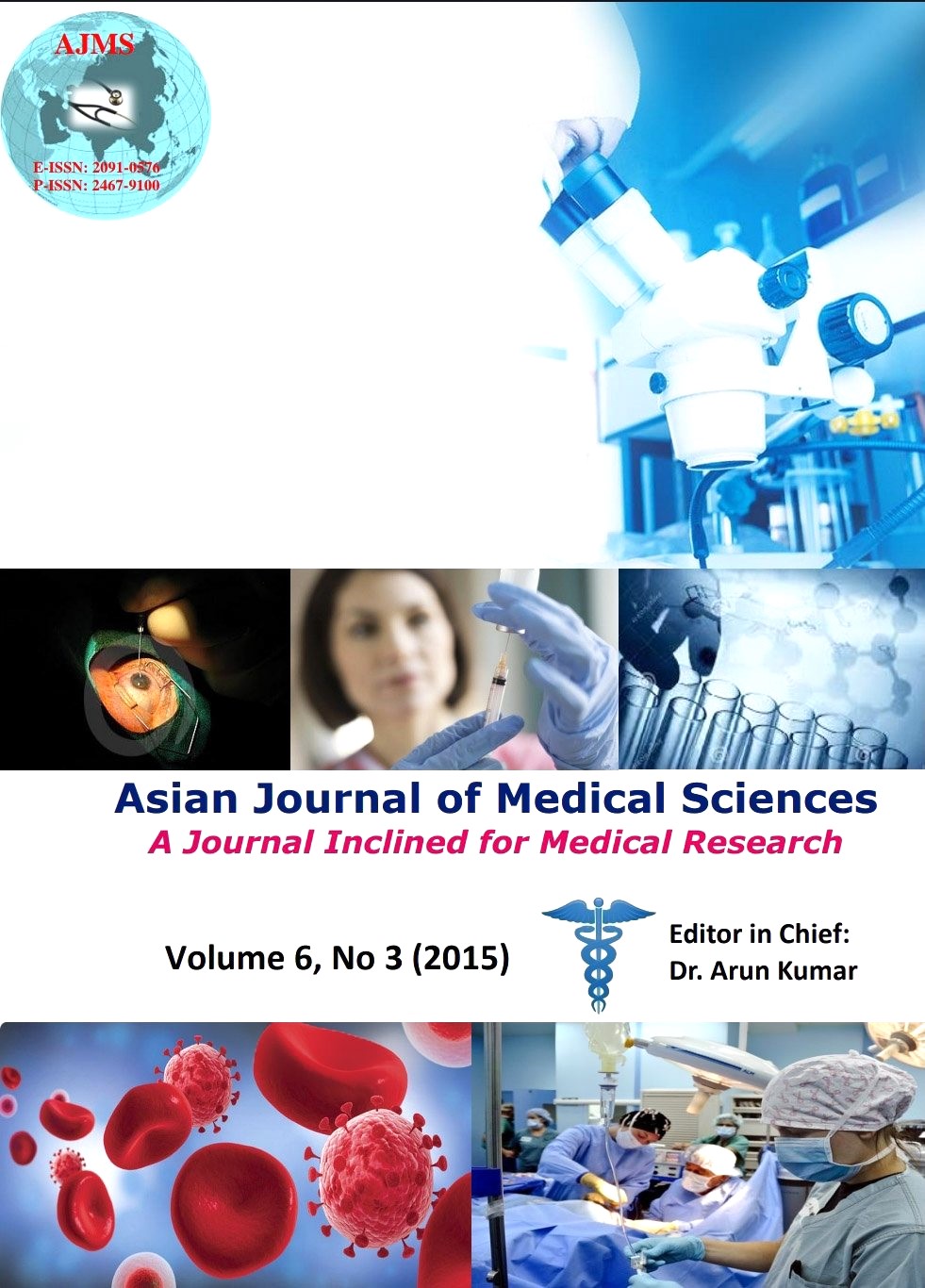Auditory brainstem response patterns in patients of diabetes mellitus: A hospital based study in Punjab
Keywords:
Type-2 Diabetes Mellitus, IPL, BAEP, Absolute LatenciesAbstract
Background: Diabetes Mellitus is an important health issue throughout the world. It is a common endocrine and metabolic disorder. Neuropathy is the most precocious and frequent late complication of diabetes mellitus. Evoked potentials offer the possibility to perform a functional evaluation of neural pathways in the central nervous system.
Aims and Objectives: This study is a modest attempt to find the relationship of central diabetic neuropathy with the disease, if any, by evaluating the brainstem auditory evoked potentials.
Materials and Methods: Brainstem auditory evoked potentials were recorded in type-2 diabetic patients taken from OPD of Medicine department of Guru Nanak Dev Hospital, Amritsar. Patients were divided into three groups based upon the duration of disease. The parameters recorded were absolute latencies of waves I, III and V & Inter-peak latencies (IPL) I-III, I-V, III-V.
Results: The results showed no statistically significant changes in any of the above parameters.
Discussion: This could be attributed to fairly good glycemic control of the patients included in the study. Thus, we conclude that patients with good glycemic control develop no auditory peripheral or central diabetic neuropathy irrespective of the duration of disease. However this study has its own limitations and further research is required to substantiate these results.
DOI: http://dx.doi.org/10.3126/ajms.v6i3.10974
Asian Journal of Medical Sciences Vol.6(3) 2015 42-45
Downloads
Downloads
Additional Files
Published
How to Cite
Issue
Section
License
Authors who publish with this journal agree to the following terms:
- The journal holds copyright and publishes the work under a Creative Commons CC-BY-NC license that permits use, distribution and reprduction in any medium, provided the original work is properly cited and is not used for commercial purposes. The journal should be recognised as the original publisher of this work.
- Authors are able to enter into separate, additional contractual arrangements for the non-exclusive distribution of the journal's published version of the work (e.g., post it to an institutional repository or publish it in a book), with an acknowledgement of its initial publication in this journal.
- Authors are permitted and encouraged to post their work online (e.g., in institutional repositories or on their website) prior to and during the submission process, as it can lead to productive exchanges, as well as earlier and greater citation of published work (See The Effect of Open Access).




